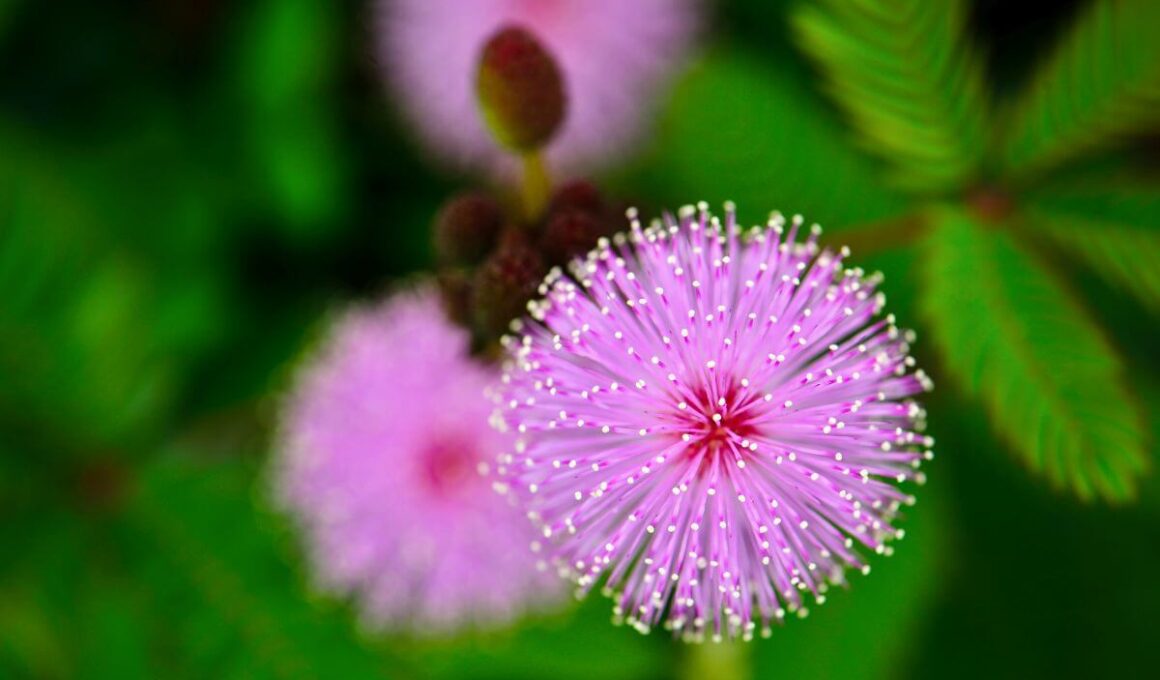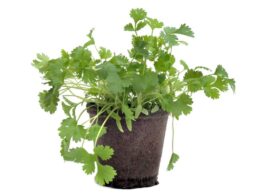What Is a Sensitive Plant? Species Characteristics and Origin
Before we jump into sensitive plant care, let’s see what makes it unique. The sensitive plant (Mimosa pudica) is a species of legume that is native to Central and South America. It gets its name from its sensitive leaves, which fold inward when they’re touched. Other common names are:
- touch-me-not;
- sleepy plant;
- action plant;
- shameplant.
The sensitive plant is a fast-growing annual or perennial that can reach up to 5 feet in length. The stems are erect in young plants, but become creeping or trailing with age. The leaves consist of pinnae with 10-26 leaflets each. The plant produces small, pinkish-white flowers that bloom in the summer.
Sensitive Plant Care – Soil Type and Fertilization
The sensitive plant is not picky when it comes to soil type, as long as it is well-drained. A good potting mix for sensitive plants would be a mixture of two parts loamy soil, two parts peat moss and one part perlite. There are also commercial potting mixes available that are formulated similarly – ask your local nursery for recommendations.
Sensitive plants should be fertilized every two weeks during the growing season with a water-soluble fertilizer. High-potassium fertilizer is recommended, as potassium is essential for the plant’s sensitive leaves to move.
Sensitive Plant Care – Watering Needs
The sensitive plant does not like to be kept too wet or too dry. The soil should be evenly moist, but not soggy. Overwatering can lead to root rot, so it’s important to let the top inch of soil dry out between watering. Maintaining the right level of humidity is important for sensitive plant care.
Sensitive plants are sensitive to fluoride, which is often found in tap water. If you are using tap water, it’s best to let it sit out for 24 hours before watering your plant. This will allow the fluoride to evaporate. You can also use rainwater or distilled water, which are both safe for sensitive plants.
How Much Light Sensitive Plants Need
Sensitive plants need bright, indirect light to thrive. They like some direct sun, but too much will scorch the leaves. If you live in a hot climate, it’s best to provide afternoon shade for your sensitive plant.
Ideal Temperatures and Humidity Levels for Sensitive Plants
The sensitive plant is a tropical plant, so it does not like cold temperatures. It should be kept above 60 degrees Fahrenheit (and up to 85 degrees). If the temperature drops below 50 degrees, the plant will go into dormancy. For this reason, you may want to keep it away from open windows during cool nights.
The sensitive plant also prefers moderate to high humidity. If the air in your home is dry, you can improve the humidity around your plant by grouping it with other plants, using a pebble tray or humidifier, or misting it with water.
Pruning Touch-Me-Not Plants
Pruning isn’t a necessary part of sensitive plant care, but you can trim the plant to keep it a manageable size. If the plant gets too leggy, you can cut it back by up to half its height. This will encourage new growth and make the plant fuller.
How to Propagate Touch-Me-Not Plants
The sensitive plant can be grown from seed or propagated by stem cuttings. The seeds are so easy to germinate that they’re often used in science experiments with kids. To grow sensitive plants from seed:
- Sow the seeds in a pot filled with moistened potting mix.
- Place the pot in a warm, sunny spot and keep the soil moist.
- The seeds should germinate within two weeks.
- Once the seedlings are large enough to handle, transplant them into individual pots.
If you want to propagate sensitive plants by stem cuttings, take a cutting from a non-flowering stem and put it in moist potting mix. Treat it as you would a sensitive plant grown from seed. It should take root within two weeks and can be transplanted once it has a good root system.
Repotting Touch-Me-Not Plants
The sensitive plant grows fast, so it may need repotting several times a year. You’ll know it’s time to repot when the roots start to come out of the bottom of the pot. When repotting, choose a pot that is only slightly larger than the current one. After repotting, the leaves may start drooping – this is normal and they will recover within a few days.
Common Problems with Sensitive Plants
While sensitive plant care is easy, you might encounter a few pests and diseases. The sensitive plant is susceptible to:
- mealybugs;
- whiteflies;
- spider mites;
- aphids.
Most of these pests will sit on the undersides of the leaves. They can be controlled with insecticidal soap or neem oil.
Sensitive plants are also susceptible to root rot and powdery mildew. These problems are most likely to occur if the plant is overwatered or kept in too much shade.
Growing Mimosa Pudica Plants Is Easy!
And there you have it – everything you need to know about sensitive plant care! With a little effort, you can have a beautiful sensitive plant of your own. Just remember to give it bright light, moderate humidity, and well-drained soil.



















